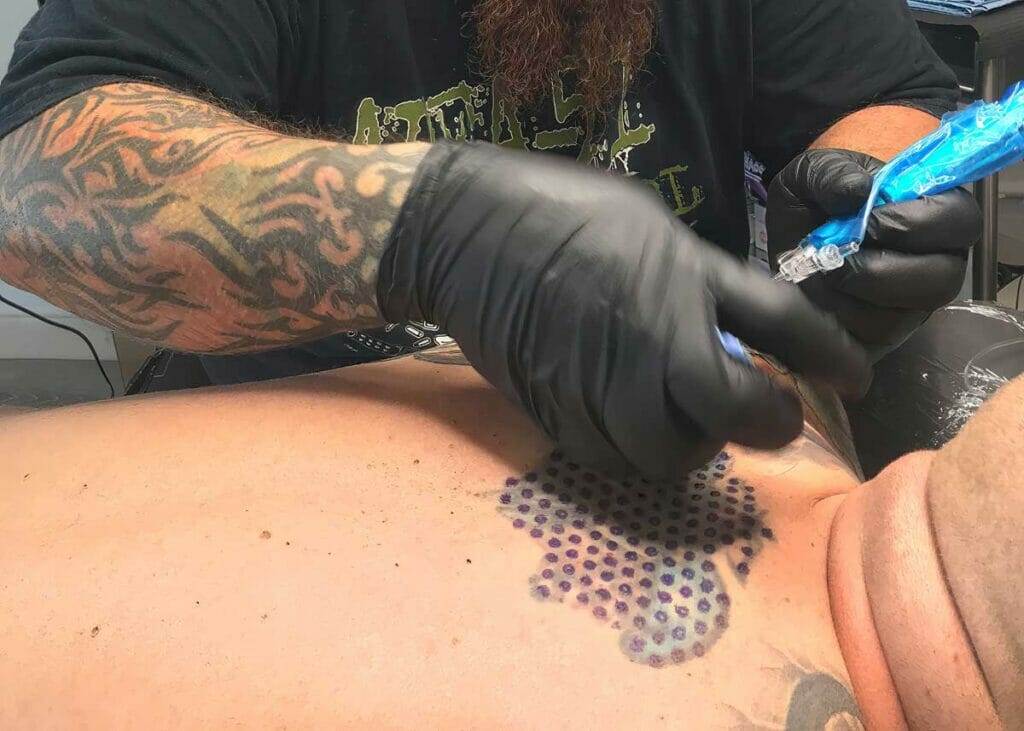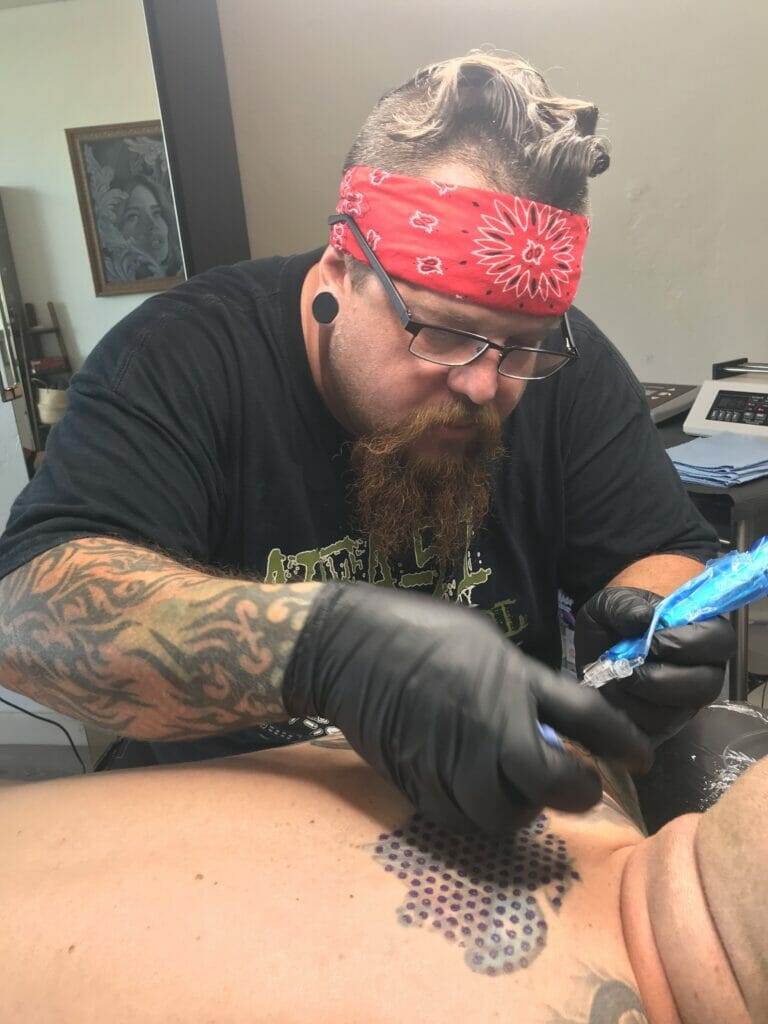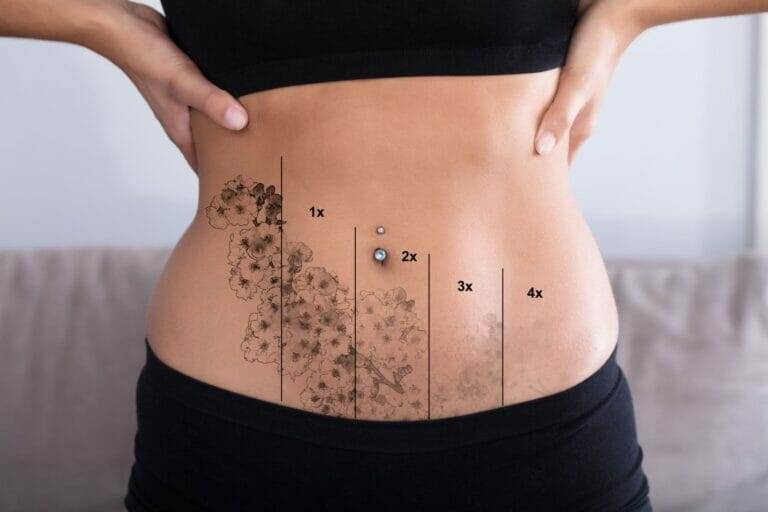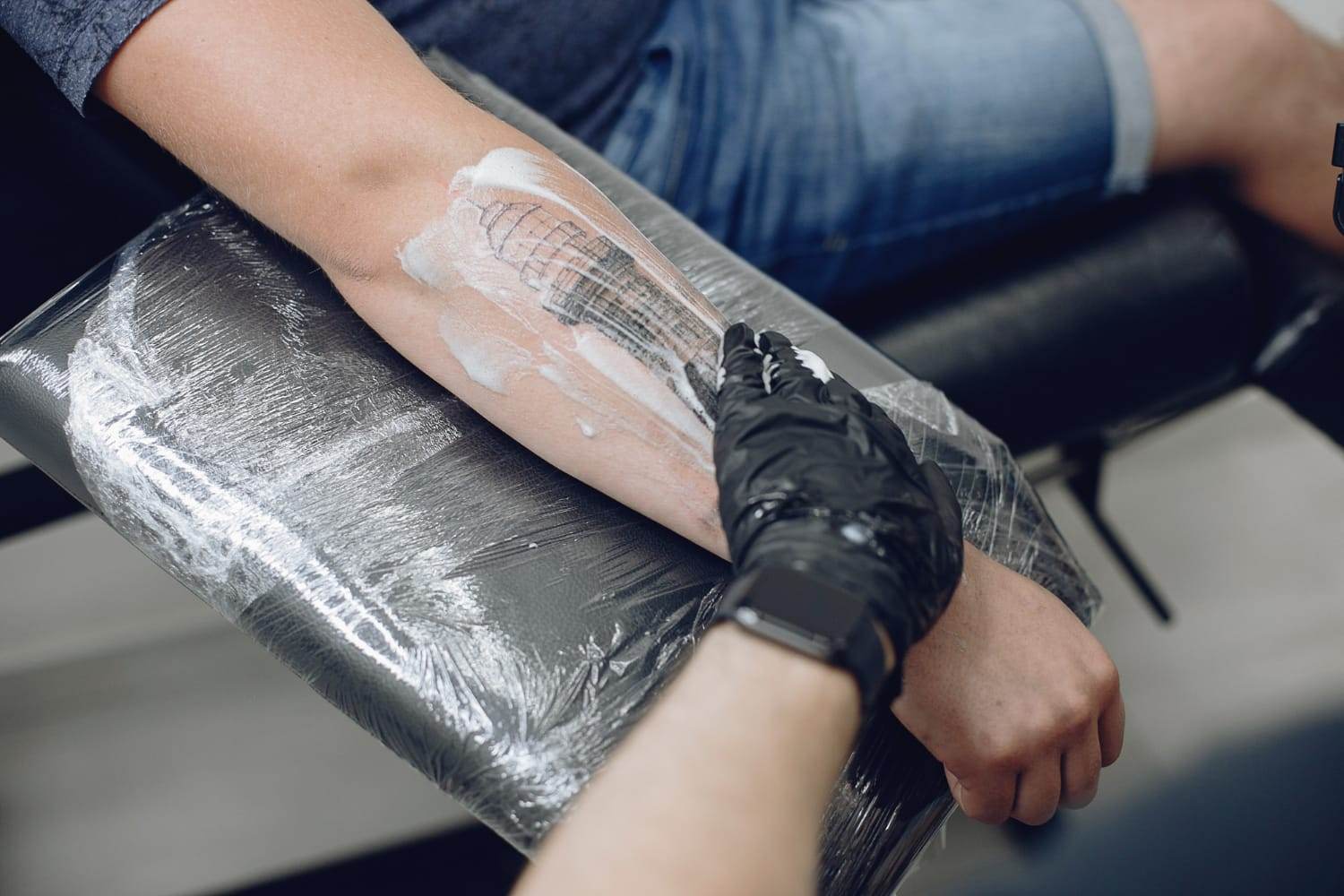In recent years, there has been a significant rise in the number of people experiencing tattoo regret. Whether it’s due to a change in personal taste, a desire to remove a tattoo associated with a past relationship, or simply wanting a fresh start, the need for tattoo removal has become more prevalent than ever before. While laser tattoo removal has long been the go-to method for removing unwanted tattoos, it has its limitations. This has led to an increased interest in non-laser tattoo removal methods, which offer alternative options for those seeking to erase their ink.
Laser tattoo removal works by using high-intensity light beams to break down the tattoo ink particles. However, this method can be expensive, time-consuming, and may not be suitable for all skin types or colors. Additionally, laser tattoo removal can cause pain, scarring, and may require multiple sessions to achieve desired results. Non-laser tattoo removal methods offer a different approach that can be more affordable, less painful, and potentially more effective for certain individuals.
Understanding the Different Types of Non-Laser Tattoo Removal Methods
There are several non-laser tattoo removal methods available today, each with its own unique approach and set of benefits. These methods include chemical peel tattoo removal, dermabrasion tattoo removal, salabrasion tattoo removal, cryosurgery tattoo removal, and tattoo removal creams. Let’s take a closer look at each of these methods.
Chemical peel tattoo removal involves applying a chemical solution to the skin that causes the top layers to peel off, taking the tattoo ink with them. This method is typically performed by a dermatologist or trained professional and may require multiple sessions to achieve desired results. Chemical peel tattoo removal is most effective on smaller tattoos and may not be suitable for those with sensitive skin or certain medical conditions.
Dermabrasion tattoo removal involves using a high-speed rotating brush or diamond wheel to remove the top layers of skin, effectively erasing the tattoo. This method can be painful and may require local anesthesia. Dermabrasion tattoo removal is most effective on older tattoos and may not be suitable for those with darker skin tones or certain medical conditions.
Salabrasion tattoo removal is a natural alternative to laser tattoo removal that involves using a saltwater solution to remove the tattoo ink. This method is typically performed at home and requires rubbing the saltwater solution onto the tattooed area until the skin becomes raw. The skin is then covered with a bandage and left to heal. Salabrasion tattoo removal can be painful and may cause scarring or infection if not done properly.
Cryosurgery tattoo removal involves freezing the tattooed area with liquid nitrogen, causing the skin to blister and peel off. This method is typically performed by a dermatologist or trained professional and may require multiple sessions to achieve desired results. Cryosurgery tattoo removal can be painful and may cause temporary discoloration or scarring.
Tattoo removal creams are topical solutions that claim to fade or remove tattoos over time. These creams work by breaking down the tattoo ink particles and allowing them to be absorbed by the body. However, the effectiveness of tattoo removal creams can vary greatly, and some may contain harsh chemicals that can irritate the skin. It’s important to choose a reputable brand and follow the instructions carefully when using tattoo removal creams.
Chemical Peel Tattoo Removal: How It Works and What to Expect
Chemical peel tattoo removal involves applying a chemical solution to the skin that causes the top layers to peel off, taking the tattoo ink with them. This method is typically performed by a dermatologist or trained professional and may require multiple sessions to achieve desired results.
During a chemical peel tattoo removal session, the professional will first clean the tattooed area and apply a numbing cream or local anesthesia to minimize discomfort. They will then apply the chemical solution to the tattooed area and leave it on for a specific amount of time, depending on the size and color of the tattoo. After the solution has been applied, the professional will neutralize it and clean the area.
The effectiveness of chemical peel tattoo removal can vary depending on factors such as the size, color, and age of the tattoo. Generally, smaller and lighter tattoos respond better to chemical peel removal than larger and darker tattoos. Multiple sessions may be required to achieve desired results, and there may be some residual scarring or discoloration.
Potential risks and side effects of chemical peel tattoo removal include skin irritation, redness, swelling, blistering, scarring, and infection. It’s important to follow all aftercare instructions provided by the professional and to keep the treated area clean and protected during the healing process.
Dermabrasion Tattoo Removal: Advantages and Disadvantages
Dermabrasion tattoo removal involves using a high-speed rotating brush or diamond wheel to remove the top layers of skin, effectively erasing the tattoo. This method can be painful and may require local anesthesia.
During a dermabrasion tattoo removal session, the professional will first clean the tattooed area and apply a numbing cream or local anesthesia to minimize discomfort. They will then use a handheld device with a rotating brush or diamond wheel to abrade the skin and remove the tattoo ink. After the procedure, the treated area will be covered with a dressing or ointment to protect it during the healing process.
The benefits of dermabrasion tattoo removal include its ability to effectively remove tattoos, especially older ones that may be more difficult to remove with other methods. It can also be performed on various skin types and colors. However, dermabrasion can be painful and may cause temporary redness, swelling, scabbing, or scarring. It’s important to follow all aftercare instructions provided by the professional and to keep the treated area clean and protected during the healing process.
Salabrasion Tattoo Removal: The Natural Alternative to Laser

Salabrasion tattoo removal is a natural alternative to laser tattoo removal that involves using a saltwater solution to remove the tattoo ink. This method is typically performed at home and requires rubbing the saltwater solution onto the tattooed area until the skin becomes raw. The skin is then covered with a bandage and left to heal.
The process of salabrasion tattoo removal begins with cleaning the tattooed area and preparing a saltwater solution. The solution is then applied to the tattooed area and rubbed vigorously with a sterile gauze pad or sponge until the skin becomes raw. Afterward, the area is covered with a bandage or dressing to protect it during the healing process.
The benefits of salabrasion tattoo removal include its affordability, simplicity, and natural approach. It can be done at home with readily available ingredients, and it may be suitable for those who are unable to undergo laser tattoo removal due to skin type or other factors. However, salabrasion can be painful and may cause scarring or infection if not done properly. It’s important to follow all instructions carefully and to keep the treated area clean and protected during the healing process.
Cryosurgery Tattoo Removal: The Pros and Cons
Cryosurgery tattoo removal involves freezing the tattooed area with liquid nitrogen, causing the skin to blister and peel off. This method is typically performed by a dermatologist or trained professional and may require multiple sessions to achieve desired results.
During a cryosurgery tattoo removal session, the professional will first clean the tattooed area and apply a local anesthetic to minimize discomfort. They will then use a handheld device or cotton swab to apply liquid nitrogen to the tattooed area, freezing the skin and causing it to blister. After the procedure, the treated area will be covered with a dressing or ointment to protect it during the healing process.
The benefits of cryosurgery tattoo removal include its ability to effectively remove tattoos, especially those with darker ink or deeper penetration. It can also be performed on various skin types and colors. However, cryosurgery can be painful and may cause temporary redness, swelling, blistering, or scarring. Multiple sessions may be required to achieve desired results, and it’s important to follow all aftercare instructions provided by the professional.
Tattoo Removal Creams: Do They Really Work?
Tattoo removal creams are topical solutions that claim to fade or remove tattoos over time. These creams work by breaking down the tattoo ink particles and allowing them to be absorbed by the body. However, the effectiveness of tattoo removal creams can vary greatly, and some may contain harsh chemicals that can irritate the skin.
The effectiveness of tattoo removal creams depends on various factors, including the size, color, and age of the tattoo, as well as the individual’s skin type and response to the cream. Some people may see noticeable fading or lightening of their tattoos with regular use of tattoo removal creams, while others may not see any significant results.
It’s important to choose a reputable brand when using tattoo removal creams and to follow the instructions carefully. Some creams may require daily application for several weeks or months to achieve desired results. It’s also important to note that tattoo removal creams may cause skin irritation, redness, itching, or burning in some individuals. If any adverse reactions occur, it’s best to discontinue use and consult a dermatologist.
Non-Laser Tattoo Removal at Home: Safety Tips and Precautions
While non-laser tattoo removal methods can be performed at home, it’s important to exercise caution and follow safety tips and precautions to minimize risks and potential side effects.
First and foremost, it’s crucial to consult with a professional before attempting at-home tattoo removal. A dermatologist or trained professional can assess your tattoo and skin type, provide guidance on the most suitable method for your specific case, and offer advice on how to perform the procedure safely.
It’s also important to be aware of the potential risks and side effects of at-home tattoo removal. These can include skin irritation, redness, swelling, blistering, scarring, and infection. It’s essential to follow all instructions carefully, use sterile equipment and products, and keep the treated area clean and protected during the healing process.
Additionally, it’s important to be patient and realistic about the results of at-home tattoo removal. Non-laser methods may require multiple sessions or extended periods of time to achieve desired results. It’s important to follow a consistent routine and give your skin time to heal between sessions.
Choosing the Right Non-Laser Tattoo Removal Method for Your Skin Type
When choosing a non-laser tattoo removal method, it’s important to consider your skin type and its specific needs. Different methods may be more suitable for certain skin types or colors, and using the wrong method can increase the risk of adverse reactions or ineffective results.
For example, chemical peel tattoo removal may not be suitable for those with sensitive skin or certain medical conditions. Dermabrasion tattoo removal may not be suitable for those with darker skin tones or certain medical conditions. Salabrasion tattoo removal may not be suitable for those with open wounds or infections. Cryosurgery tattoo removal may not be suitable for those with cold sensitivity or certain medical conditions.
It’s best to consult with a dermatologist or trained professional who can assess your skin type and provide guidance on the most suitable non-laser tattoo removal method for your specific case. They can also offer advice on how to perform the procedure safely and effectively.
The Cost of Non-Laser Tattoo Removal: How to Save Money
The cost of non-laser tattoo removal can vary depending on factors such as the size, color, and age of the tattoo, as well as the method used and the number of sessions required. Generally, non-laser methods are more affordable than laser tattoo removal, but costs can still add up over time.
To save money on non-laser tattoo removal, it’s important to do your research and compare prices from different professionals or clinics. Some may offer package deals or discounts for multiple sessions. It’s also worth considering at-home tattoo removal methods, which can be more cost-effective in the long run.
However, it’s important to prioritize safety and effectiveness over cost when choosing a non-laser tattoo removal method. It’s best to consult with a reputable professional who can assess your tattoo and skin type and provide guidance on the most suitable method for your specific case.

Moving Forward with Non-Laser Tattoo Removal
For those experiencing tattoo regret, non-laser tattoo removal methods offer alternative options that can be more affordable, less painful, and potentially more effective than laser tattoo removal. Chemical peel tattoo removal, dermabrasion tattoo removal, salabrasion tattoo removal, cryosurgery tattoo removal, and tattoo removal creams all provide different approaches to removing unwanted tattoos.
It’s important to choose a reputable professional when considering non-laser tattoo removal and to consult with them before attempting at-home methods. They can assess your tattoo and skin type, provide guidance on the most suitable method for your specific case, and offer advice on how to perform the procedure safely.
While non-laser tattoo removal methods may require multiple sessions or extended periods of time to achieve desired results, they offer a viable solution for those seeking to erase their ink. With careful consideration of your skin type and its specific needs, you can choose the right non-laser tattoo removal method and move forward with confidence towards a fresh start.








